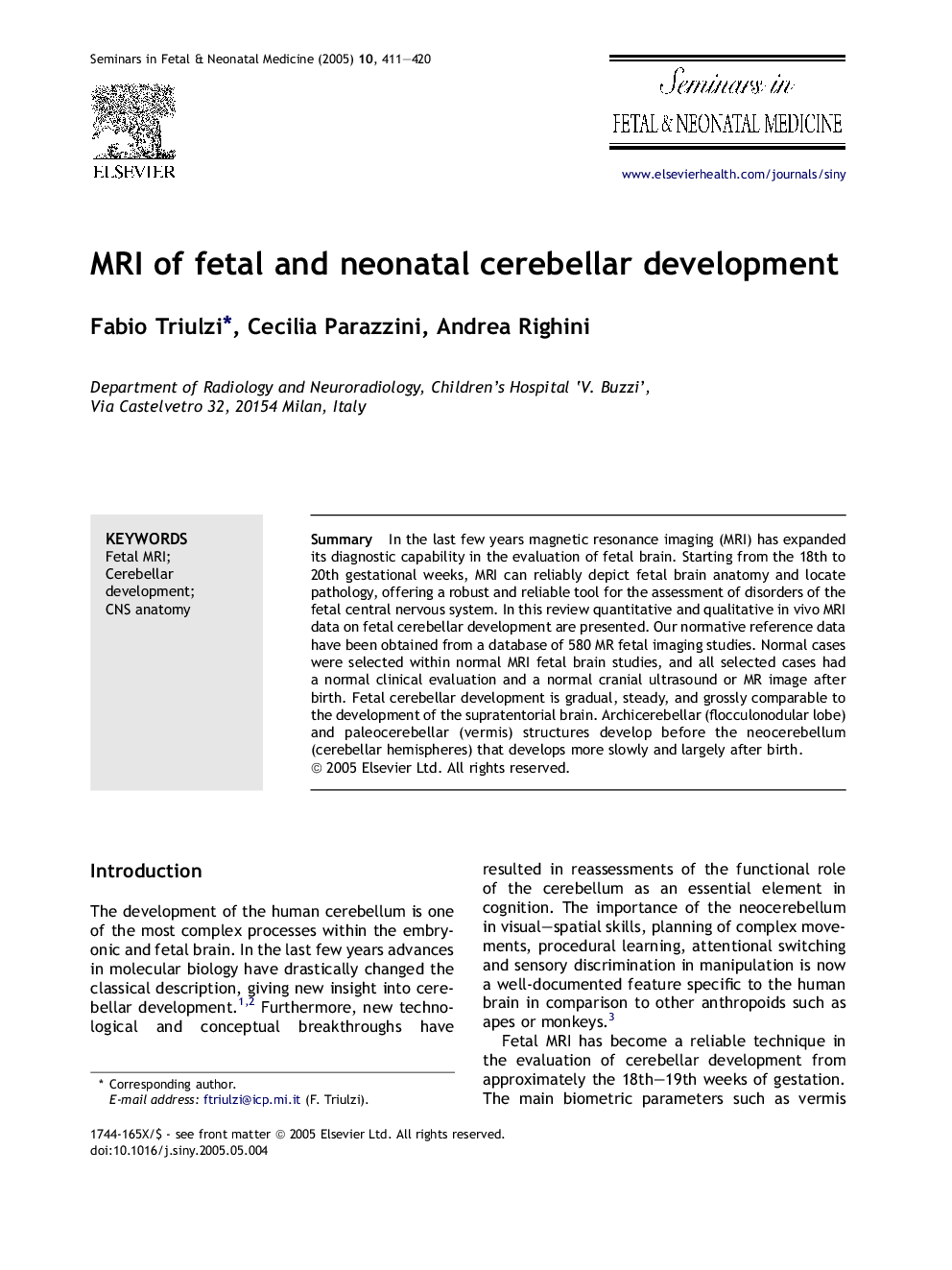| Article ID | Journal | Published Year | Pages | File Type |
|---|---|---|---|---|
| 9336037 | Seminars in Fetal and Neonatal Medicine | 2005 | 10 Pages |
Abstract
In the last few years magnetic resonance imaging (MRI) has expanded its diagnostic capability in the evaluation of fetal brain. Starting from the 18th to 20th gestational weeks, MRI can reliably depict fetal brain anatomy and locate pathology, offering a robust and reliable tool for the assessment of disorders of the fetal central nervous system. In this review quantitative and qualitative in vivo MRI data on fetal cerebellar development are presented. Our normative reference data have been obtained from a database of 580 MR fetal imaging studies. Normal cases were selected within normal MRI fetal brain studies, and all selected cases had a normal clinical evaluation and a normal cranial ultrasound or MR image after birth. Fetal cerebellar development is gradual, steady, and grossly comparable to the development of the supratentorial brain. Archicerebellar (flocculonodular lobe) and paleocerebellar (vermis) structures develop before the neocerebellum (cerebellar hemispheres) that develops more slowly and largely after birth.
Keywords
Related Topics
Health Sciences
Medicine and Dentistry
Obstetrics, Gynecology and Women's Health
Authors
Fabio Triulzi, Cecilia Parazzini, Andrea Righini,
